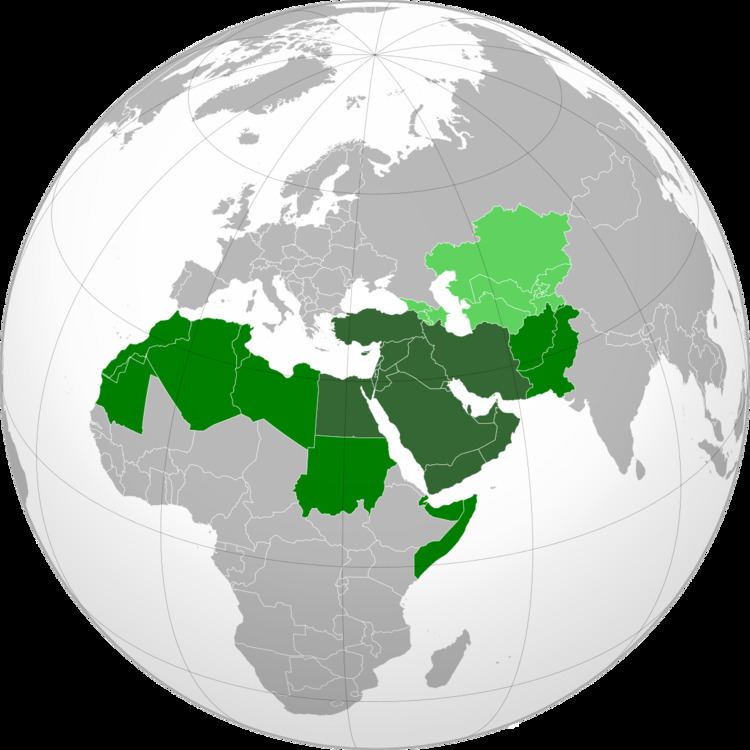Population ~750 million | ||
 | ||
Countries 37 countries Afghanistan Algeria Bahrain Djibouti Egypt Iran Iraq Israel Jordan Kuwait Lebanon Libya Mauritania Morocco Oman Pakistan Palestine Qatar Saudi Arabia Somalia Somaliland Sudan Syria Tunisia Turkey Sahrawi Arab Democratic Republic United Arab Emirates Yemen Armenia Azerbaijan Cyprus Georgia Kazakhstan Kyrgyzstan Tajikistan Turkmenistan Uzbekistan Languages ~60 languagesOfficial languagesArabicArmenianGreekHebrewKurdishPersianTurkishGeorgianUrduUnofficial spoken/recognized languagesAbazaAbkhazAfshar languageAmharicAzerbaijaniBalochiChechenChineseCircassianCrimean TatarCopticDomariEnglishFrenchBalkan Gagauz TurkishGilakiHungarianHindiItalianKabardianKazakhKumykKurbetKyrgyzJudaeo-SpanishLazLurishMarathiMalayalamMazanderaniAramaicNobiinQashqaiRomanianSiwaSomaliSyriacSpanishPunjabiTagalogTalyshTatarThaiToskTurkmenTuroyoUkrainianUyghurYiddishZaza Time Zones UTC+2:00, UTC+3:00, UTC+3:30, UTC+4:00, UTC+4:30 Largest Cities Karachi Cairo Istanbul Tehran Lahore Baghdad Riyadh Faisalabad Khartoum | ||
The Greater Middle East is a political term that denotes a set of contiguously connected countries. The region stretches from Morocco in the west all the way to the western edge of China in the east. Various countries in the South Caucasus and Central Asia are sometimes also included. According to Andrew Bacevich in his book "America's war for the Greater Middle East" (2016), the career soldier and Professor Emeritus at Boston University states that this region is the theatre for a series of conflicts dating back to 1980, which heralded the start of the Iran-Iraq war. Since then, the U.S. has been involved in balancing conflicts amongst these culturally interconnected nations in order to further its interests in the region. The Greater Middle East is sometimes referred to as "The New Middle East", or "The Great Middle East Project".
Contents
- Countries and territories of the Greater Middle East
- Countries sometimes associated with the Greater Middle East
- References
This term was more clearly defined to denote a specific region in the U.S. administration's preparatory work for the G8 summit of 2004 as part of a proposal for sweeping change in the way the West deals with the Middle East.
Former U.S. National Security Advisor Zbigniew Brzezinski states that a "political awakening" is taking place in this region which may be an indicator of the multi-polar world that is now developing. He alluded to the Greater Middle East as the "Global Balkans", and as a control lever on an area he refers to as Eurasia.
Countries and territories of the Greater Middle East
Countries sometimes associated with the Greater Middle East
Source: "America's War on the Greater Middle East, Andrew Bacevich (2016)"
